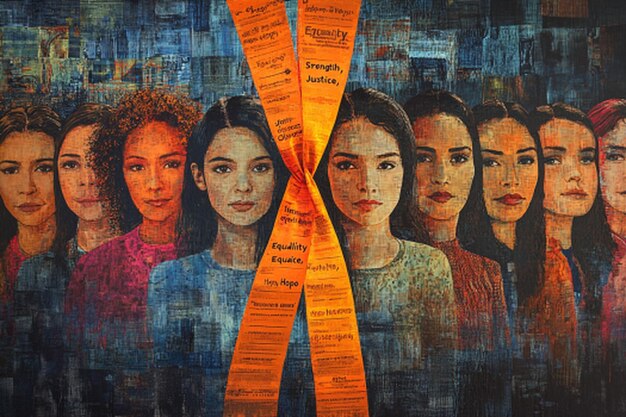Exploring the Limitations of Single Theoretical Lenses in American Literature

What are the limitations of applying a single theoretical lens to American literary texts? This approach can lead to biased interpretations, overlook crucial aspects, and fail to capture the complexity and diversity within the works.
American literature is a rich tapestry of diverse voices and complex themes. Analyzing these texts requires a nuanced approach that acknowledges the multiple layers of meaning embedded within them. However, approaching American literature through a single theoretical lens can inadvertently limit our understanding and appreciation of these works. What are the limitations of applying a single theoretical lens to American literary texts?
By exploring these constraints, we can foster a more comprehensive and insightful engagement with the texts and the cultural contexts from which they emerge. This article will delve into the various limitations of this approach, highlighting the importance of embracing multiple perspectives for a fuller appreciation of American literary heritage.
Understanding the Pitfalls: What are the Limitations of Applying a Single Theoretical Lens to American Literary Texts?
When studying American literary texts, it can be tempting to rely on a single theoretical framework. While focusing on one lens might seem efficient, it can lead to a distorted understanding of the text. So, what are the limitations of applying a single theoretical lens to American literary texts? A singular approach can obscure the multi-faceted nature of literature and neglect important social, historical, and cultural contexts.
Overlooking Nuances and Complexities
Literature often reflects the complexities of human experience and societal structures. Restricting analysis to one perspective can cause a researcher to miss subtle but significant elements. This oversight distorts the overall interpretation.
- Ignoring Historical Context: A purely formalist approach might disregard the historical events that influenced the author and the text.
- Neglecting Cultural Influences: A focus on psychological themes might overshadow the cultural norms and values represented in the work.
- Missing Intertextual References: A thematic lens might fail to recognize the references and allusions to other literary works that enrich the text.
Applying a single lens offers the allure of simplicity, but it can greatly distort the truth. Consider a novel that critiques societal norms; focusing exclusively on character psychology might neglect the broader commentary on social inequity. Therefore, acknowledging various perspectives ensures a comprehensive exploration of the text’s richness.

The Danger of Biased Interpretations
The use of one lens in literary analysis carries the risk of generating skewed or prejudiced readings. This not only weakens the analytical process but also compromises the integrity of the interpretations derived from the text. But exactly what are the limitations of applying a single theoretical lens to American literary texts in terms of promoting biases?
Confirmation Bias in Literary Analysis
Adhering to a single theoretical lens can lead to confirmation bias, where analysts selectively focus on evidence that reinforces their preconceived notions. This not only ignores contradictory evidence, but prevents any kind of objective assessment. The results are interpretations that are more reflections of the analyst’s bias than the intention of the author.
- Selective Evidence: Choosing only the textual evidence that supports the selected theoretical framework.
- Ignoring Contradictions: Downplaying or rationalizing away any elements that conflict with the chosen perspective.
- Imposing External Agendas: Unintentionally projecting personal beliefs or political agendas onto the text, thereby altering its original meaning.
To mitigate these risks, analysts must maintain a transparent methodology, actively seeking out diverse interpretations and critically evaluating their assumptions. Recognizing the limitations of a single lens and embracing multiple angles fosters a more balanced and unbiased assessment of literary texts.
Theoretical Myopia: A Restricted View of American Literature
Applying a single theoretical lens can create “theoretical myopia,” limiting one’s viewpoint and potentially skewing the analysis. This is because what are the limitations of applying a single theoretical lens to American literary texts often involve missing different layers of meaning that multiple lenses could bring to light.
The Risk of Oversimplification
Focusing solely on one theoretical perspective might lead to oversimplifying the complexities in American literary texts. This approach fails to capture diverse cultural, historical, and social contexts.
When a singular lens is applied, crucial nuances are commonly overlooked. This narrowing of focus can distort a full, rich understanding.
- Missing Cultural Undertones: A lens might ignore the cultural background that enriches the text.
- Neglecting Historical Threads: The historical implications woven into the narrative can often be lost.
- Ignoring Social Commentary: Commentary on societal norms and challenges might not be seen.
Employing multiple theoretical lenses allows for a more enriched, comprehensive exploration of American literature. This ensures a nuanced and comprehensive grasp of the text’s intricate dimensions.
The Importance of Interdisciplinary Approaches
Adopting an interdisciplinary approach can add vital dimensions to literary criticism. It allows for a deeper exploration and brings fresh perspectives. Considering the risks of theoretical myopia, what are the limitations of applying a single theoretical lens to American literary texts compared to using interdisciplinary methods?
Incorporating Diverse Fields of Study
Integrating insights from various fields enhances critical analysis and fosters deeper understanding. This broadens the context and enriches interpretations.
Interdisciplinary methods challenge traditional boundaries. This fosters creativity and ensures a more thorough assessment.
- Historical Context: Understanding the historical setting influences the narrative.
- Sociological Factors: Acknowledging cultural norms enhances interpretations.
- Psychological Insights: Recognizing psychological aspects provides new perspectives.
Combining varied disciplines offers richer insights. It avoids the limitations that come from theoretical restrictions and increases insightful analysis.

Case Studies: Illustrating the Limitations
To appreciate the real-world implications, let’s analyze specific examples. Examining these cases highlights the issues from adhering to single theoretical lenses. With these examples in mind, what are the limitations of applying a single theoretical lens to American literary texts in diverse scenarios?
Example 1: “The Great Gatsby” through a Marxist Lens
Analyzing “The Great Gatsby” exclusively through Marxism may focus entirely on class disparities. This could neglect themes of love, memory, and the American Dream.
Without considering other lenses, a full interpretation of the novel’s thematic richness is limited.
Example 2: “The Scarlet Letter” through a Feminist Lens
Focusing only on gender issues in “The Scarlet Letter” might overlook discussions of sin, guilt, and redemption.
The narrative’s historical and psychological complexities diminish due to this narrow perspective.
Example 3: “Moby Dick” through a Post-Structuralist Lens
A reading of “Moby Dick” that only considers deconstruction might not fully explore adventure, obsession, or the human-nature relationship.
An analysis risks losing the story’s broader humanistic and existential ideas.
These cases illustrate how critical insights might be neglected. The comprehensive depiction of American Literature enriches when integrating diverse viewpoints is lost.
Moving Beyond Single Lenses: Toward Integrative Criticism
The next step involves integrating different perspectives. Integrative criticism promotes a richer, fuller assessment of American literary texts. So, after understanding what are the limitations of applying a single theoretical lens to American literary texts, how can we move towards a more integrated approach?
Embracing Pluralism in Literary Analysis
Critical pluralism embraces various theoretical viewpoints. It encourages a diverse exploration that broadens insight.
This approach cultivates open-mindedness. It promotes continuous learning and deeper critical exploration.
- Combining Perspectives: Merging insights from various fields enhances understanding.
- Acknowledging Limitations: Recognizing constraints results in responsible analysis.
- Promoting Dialogue: Encouraging intellectual exchange fosters collaborative growth.
Encouraging an environment that balances different approaches is crucial. Integrating criticism can lead to insightful explorations. This enriches both literary and interdisciplinary dialogues.
| Key Point | Brief Description |
|---|---|
| 💡 Biased Interpretations | Single lenses can lead to skewed readings of American literature. |
| 🔍 Oversimplification | Complex themes are reduced, affecting comprehensive views. |
| 📚 Missing Contexts | Historical, cultural, and social backgrounds are often overlooked. |
| 🌟 Interdisciplinary Approach | Combining fields enhances nuanced literary analysis. |
Frequently Asked Questions (FAQ)
The main risks include biased interpretations because what are the limitations of applying a single theoretical lens to American literary texts include the skewing of textual evidence.
Interdisciplinary analysis broadens perspectives by integrating insights from different academic fields, enhancing the understanding of a literary text.
Focusing solely on Marxism may cause one to emphasize class disparities but neglect the novel’s commentary on dreams and nostalgia. What are the limitations of applying a single theoretical lens to American literary texts when diverse readings exist?
“Theoretical myopia” refers to the limited view one may get by adhering to only one perspective, which reduces comprehensive insight.
Analysts can avoid bias by seeking diverse opinions when applying a single theoretical lens. What are the limitations of applying a single theoretical lens to American literary texts? Bias is a major risk.
Conclusion
In summary, using a single theoretical lens has inherent limitations. It risks biased interpretations, oversimplification, and neglects the multi-faceted nature of American literature. What are the limitations of applying a single theoretical lens to American literary texts? They underscore the need for critical pluralism.





